The Samsung Galaxy S10+ Snapdragon & Exynos Review: Almost Perfect, Yet So Flawed
by Andrei Frumusanu on March 29, 2019 9:00 AM ESTThe Exynos 9820 SoC - A New Tri-CPU Design
While we know quite a lot about the new Snapdragon 855, information on the new Exynos 9820 has been extremely scarce given S.LSI’s more closed nature. What we know is that the new chip brings with it a new tri-CPU group design and a few vague mentions about its performance and efficiency claims. The chip was announced back in November and I wasn’t too hopeful based on the quoted marketing numbers – the figures needed to be better in order to be able to compete with the Kirin 980 and Snapdragon 855, at least on paper.
Probably the biggest wildcard for the Exynos 9820 is its 8nm LPP manufacturing node. Qualcomm this year had opted to switch over to TSMC’s 7nm manufacturing node for the Snapdragon 855, and the decision looks to be linked to the indisputable superiority of the node.
| Samsung Exynos SoCs Specifications | |||
| SoC |
Exynos 9820 |
Exynos 9810 | |
| CPU | 2x M4 @ 2.73 GHz 2x 512KB pL2 2x Cortex A75 @ 2.31 GHz 2x 256KB pL2 4x Cortex A55 @ 1.95 GHz No pL2's Shared complex sL3 @ 4MB |
4x M3 @ 1c2.7 / 2c2.3 / 4c1.8 GHz 4x 512KB pL2 4096KB sL3 4x Cortex A55 @ 1.8 GHz no pL2 512KB sL3 |
|
| GPU | Mali G76MP12 @ 702MHz | Mali G72MP18 @ 572MHz | |
| Memory Controller |
4x 16-bit CH LPDDR4X @ 2093MHz |
4x 16-bit CH LPDDR4X @ 1794MHz |
|
| ISP | Rear: 22MP Front: 22MP Dual: 16MP+16MP |
Rear: 24MP Front: 24MP Dual: 16MP+16MP |
|
| Media | 8K30 & 4K150 encode & decode H.265/HEVC, H.264, VP9 |
10bit 4K120 encode & decode H.265/HEVC, H.264, VP9 |
|
| Integrated Modem | Shannon 5000 Integrated LTE (Category 20/13) DL = 2000 Mbps 8x20MHz CA, 256-QAM UL = 316 Mbps 3x20MHz CA, 256-QAM |
Shannon 359 Integrated LTE (Category 18/13) DL = 1200 Mbps 6x20MHz CA, 256-QAM UL = 200 Mbps 2x20MHz CA, 256-QAM |
|
| Mfc. Process | Samsung 8nm LPP |
Samsung 10nm LPP |
|
ChipRebel a few weeks ago was able to tear down a Galaxy S10 with the Exynos 9820 and take some great die shot pictures revealing the innards of the new chip.
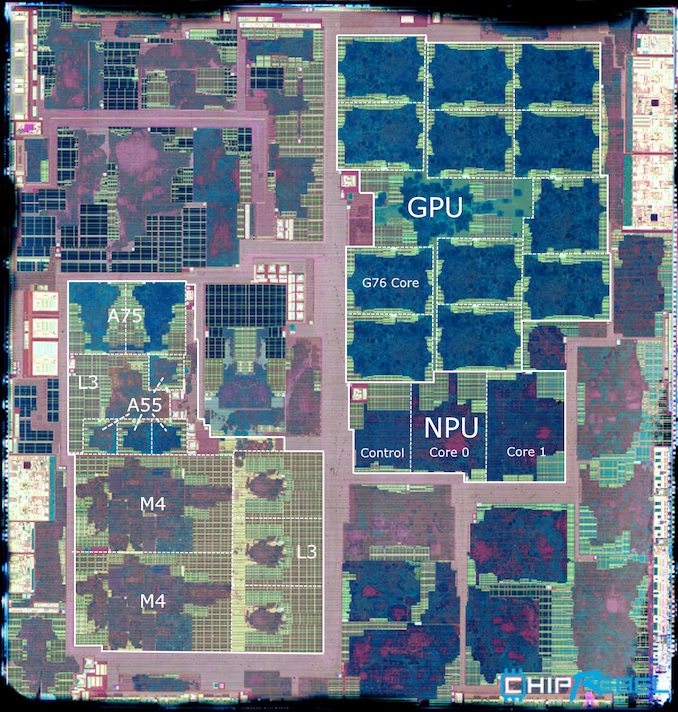
Die shot: Chip Rebel - Annotations/labelling: Andrei @ AnandTech
The one thing that immediately jumps out is the fact that at 127mm², Samsung new chip is extremely large compared to the 73mm² Snapdragon 855. At least in terms of die size, I don’t remember the differences between two SoCs of a generation to have ever been this large.
The new SoC sees the usage of Samsung’s fourth generation CPU core, the M4. The new CPU is codenamed Cheetah, a quite obvious nod to the design team which consists of former AMD folks who were responsible for the big cat line-up of CPU cores.
The CPU cluster is completely re-arranged when compared to last year’s Exynos 9810. A notorious issue with the prior chip was that the little CPU cores weren’t under the same cache hierarchy as the M3 cores, owning to a similar design as found in past SoCs where cache coherency between CPUs was done through the interconnect between them. The new Exynos 9820 now has a similar unified cache hierarchy as found in Arm’s DynamIQ designs, although there are some important differences.
Instead of four big cores, the Exynos 9820 employs only two – the two Cheetah M4 cores clock up to 2.73GHz and are accompanied by two Cortex A75 cores at 2.3GHz and four Cortex A55 cores at 1.95GHz. In fact, the Exynos 9820 is the first tri-CPU cluster/group SoC which actually consists of three different CPU microarchitectures. In practice, the Exynos 9820 is more similar to the Kirin 980 in this regard, just instead of the middles cores being power optimised variants of the big core, it’s just outright a smaller microarchitecture.
Samsung configures the M4 cores with 512KB private L2 caches while the A75’s get 256KB L2’s. Interestingly, Samsung again opted to not configure the A55 cores with L2 caches, instead opting to rely on their custom 1MB L3 slice. It’s here that things become interesting and a bit more exotic than Arm’s DSU. Samsung new L3 cache consists of two different structures. The M4 cores seemingly have access to 3x1MB slices which look to be very similar to the design of the L3 slices found on the Exynos 9810. However on top of this Samsung has a dedicated 1MB slice to which the Cortex A75 and A55 cores have access to. The M4 cores also have access to this 1MB slice, whereas the Cortex don’t have access to the other 3MB of L3.
As of yet I didn't manage to determine how the L3 slices are clocked. On the Exynos 9810 the L3 was on the same clock plane as the big cores, and this might also be the case for the 3MB of the Exynos 9820 as well, but I’m fairly certain the 1MB slice will have a different design and clock plane.
I extracted the voltage tables for my Galaxy S10+ unit which ended up with a mid-tier bin of 5 (Out of usually 13 groups) which is just slightly below what should be the median distribution. Samsung is still extremely aggressive in terms of the peak voltages, going over 1V for all three CPU clusters. The M4 cores went up to 1062mV at 2.73GHz on my unit, and there’s an evident kink in the voltage curve after 2.34GHz where the CPU requires a steep increase in voltage. I didn’t manage to read out the exact voltages on my Snapdragon 855 unit, but it did have a peak voltage on the prime cores at 2.84GHz of 1V, meaning already just by voltage alone the Snapdragon should have an efficiency advantage.
We see similar steep curves on the A75 and in particular the A55 cores. Last year for the Exynos 9820 I argued that it was better to remain on the A55 cores at very high frequencies and high voltages than to power on the M3 cores, but for the Exynos 9820 I have to wonder why Samsung opted to clock the A55 as high, as there’s again a very big efficiency deficit in the top frequencies. If and how this all works out, is going to depend on the scheduler and how it handles transitions between the CPUs.
Looking at Samsung’s scheduler power tables, we see some odd characteristics. According to this, the A75 cores actually aren’t more efficient than the M4 cores, except for at the lower frequencies. What is really irking me however is I can’t seem to understand why the A55 cores are marked to be as high In performance, reaching 42% of the maximum load scale. This characteristic can also be found on the Snapdragon 855. The source code marks that the performance scale is determined by MIPS, which I think is an extremely weird metric to normalise performance with. The reason could be related to how PELT works on the Exynos 9820, however I’ll get back to this topic on the system performance page later in the piece.
A more real-world power-performance curve would look as above. Here I actually went ahead and measured the SPEC performance and power at their respective peak points and normalised the curves based on this. The Cortex A55 cores in particular see a big down-shift in their relative performance.
Looking at the same data when normalising the x-axis for perf/W instead of absolute power, we again see in more obvious manner that the M4 cores should very much be quite a lot more efficient than the A75 cores at the same performance, at least for the vast majority of the A75’s upper frequency range. Similarly, the A75’s should be a ton more efficient the A55 cores at the upper performance points of the A55’s. The power figures here consider the active power (load minus idle) of the whole platform, not merely just the CPU cores. This would be a case where race-to-idle at higher power points is actually more efficient than staying on the efficient CPU cores, because of overhead of the rest of the SoC and platform such as memory controllers, DRAM, and PMIC.
It’ll be interesting so see how the Exynos 9820 fares in efficiency, as it has seemingly a large dynamic range in efficiency points.
The GPU on the new SoC is Arm’s new Mali G76 in a 12-core configuration. We had already seen the same GPU in a MP10 configuration employed in HiSilicon’s Kirin 980. In the Exynos implementation, Samsung is clocking the GPU up to at up to 702MHz which is quite higher than the 572MHz of last year’s G72MP18. I’ve noted that the voltages are quite low – 668mV at peak frequency and the voltage curve is quite shallow, meaning efficiency at lower frequencies/performance points won’t be all that much better.
A big new addition this year for Samsung is a new dedicated NPU. The new in-house IP by Samsung is quite intriguing. The company had presented the block as ISSCC this year, revealing some of its high-level workings. The block consists of 3 units: a central control block with a CPU, and two cores which contain the MAC engines. Samsung describes the block as configured in a “butterfly” structure, which specifically addresses in the way the dual-core configuration is set up. In terms of capability, there’s 1024 MAC units and the block runs at up to 933MHz. This means that the raw computational power falls in at 1.86TOPS. However the IP is capable of zero weight pruning, meaning that in real-world quantized models the block can reach a quoted 7TOPS in effective performance. Samsung currently uses the IP in the camera application of the Galaxy S10, using it for scenario recognition for the AI camera feature, always firing up whenever there’s big changes in the viewfinder scene.



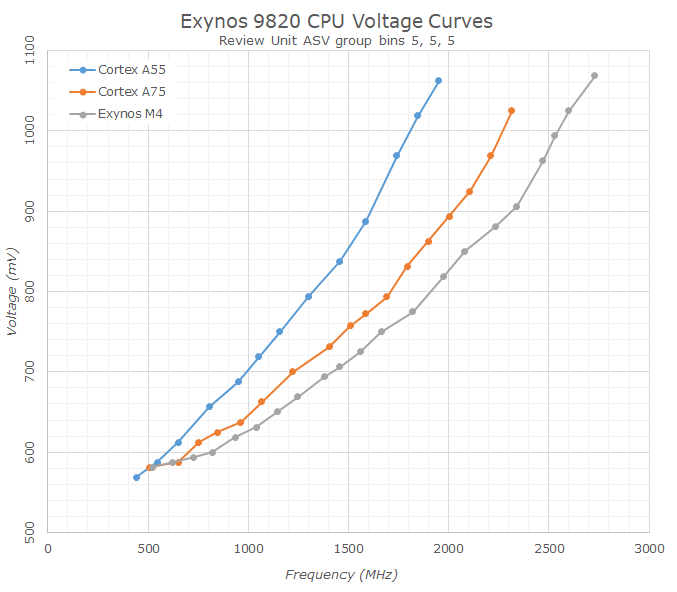
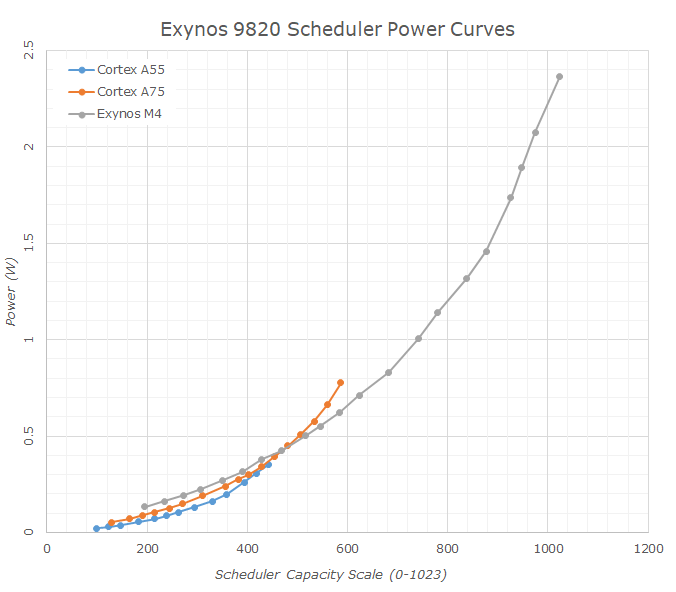
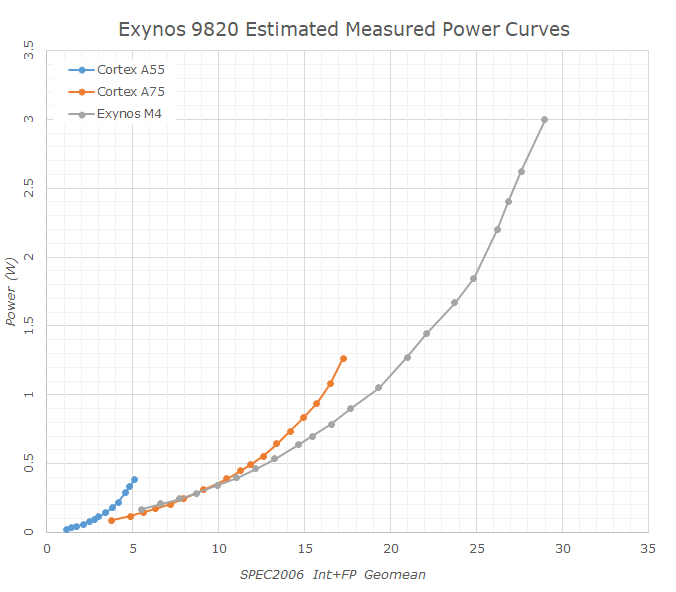
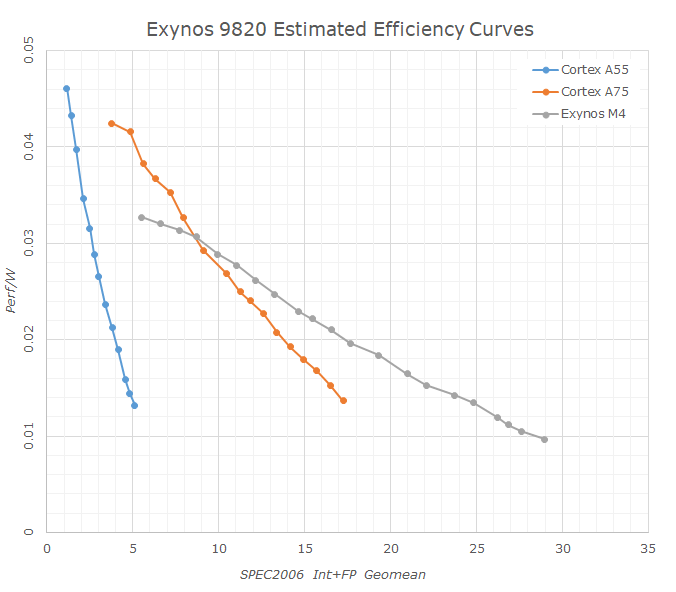








229 Comments
View All Comments
Thraxen - Friday, March 29, 2019 - link
I’m in that customization category and also not technically naive so avoiding any security issues is, well, as natural as not falling for e-mail scams. Anyway, I’m typing this reply on my iPad Pro and like it quite a bit, but compared to my S10 it’s boring as hell. The phone just feels more exciting while the iPad feels... safe? Like it was jointly produced by Fisher Price or something.jaju123 - Sunday, March 31, 2019 - link
Lol, I have the same experience. The iPad pro 11 that I have is like a kids version of what a mobile OS should be. I can barely do anything on it, whereas android on my mate 20 pro feels like an OS for adults.Thraxen - Sunday, March 31, 2019 - link
Exactly. I love customizing my phone. I can add widgets (real ones, not that card BS on iOS), change the screen grid layout, change all the icons or just one, use live wall papers (real ones, not that handful of very limited ones on iOS), add automation with apps like Tasker, change the dialer/contacts/etc apps, change how notification functions, etc, etc, etc...If there’s something you don’t like how it works or looks on Android there’s a very good chance you can change it. On iOS everything is Apple’s way. And I get the logic there. Apple is big on having a very consistent user experience. But for someone like me it’s painfully boring. Everyone’s iOS devices look the same. So one hand it means you are immediately comfortable using any iOS devices, but on the other it’s like living in one of those neighborhoods where the boulder used the same floor plan for every house. It’s soul sucking boring.
Speedfriend - Friday, March 29, 2019 - link
I use a iPhone and Android daily, and despite benchmarks saying that my iPhone 7 is much faster than my pixel 2 XL, in reality it is slower, takes longer to log into new WiFi, kills apps in the background and takes far worse photos. Plus it is loaded with bloatware I can't even remove off the home screen and can't even rearrange the home screen with icons at the bottom.Wardrive86 - Friday, March 29, 2019 - link
This is absolutely true. My job always upgrades me to the latest Iphone and Ipad. After having multiple generations of Iphone, browser performance is not as good as benchmarks suggest. Personal and work are always on the same network either WiFi or Verizon.GekkePrutser - Saturday, March 30, 2019 - link
That's because Apple skimps so much on memory. They make great SoCs but their memory skimping hurts the overall experience by killing off apps in the background too much. Especially after one or two iOS updates it becomes really bad.Irish910 - Saturday, March 30, 2019 - link
That’s just a blatant lie. I used an iPhone 7 Plus for almost 2 years and the thing was hella fast. Using my XS Max I can barely see a speed difference under most circumstances. The only thing that might seem “faster” is the non animations of apps in android. iOS is much more fluid and smooth. But memory, chipset and software, the iPhone should be faster.arayoflight - Saturday, March 30, 2019 - link
That applies only to the US. The iPhones are much, much more expensive outside of US. In my country, the 128GB S10+ costs less than the base 64GB iPhone XR (yes, the XR). If you are going to get comparable, even the base XS max costs about 1.5x of the S10+, and comes with half the storage to boot.Not to mention that Apple phones don't work that well outside US as well. There are no ubiquitous Apple stores which fix your problems immediately, Apple maps doesn't work well, or siri with non-US accents. You can't disable or set defaults to google assistant or google maps or chrome as well, so good luck. Also, the rest of the world doesn't use imessage, but WhatsApp.
iPhones are a much worse deal outside of US, They have excellent performance and displays yes, but they aren't excellent value for the atrocious prices you pay.
cha0z_ - Tuesday, April 9, 2019 - link
This, when I got my (sadly exynos as EU) note 9 it was HALF the price of the XS max 256GB at my carrier both and with deal. I literally could take two note 9 instead of a single xs max 256GB. Even if we argue that the xs max is a better phone (tho in reality it has it's + and - compared to the note 9), is it two times the price better? Had the money to buy both, but tbh I like android generally more. Tho I must admit that the iphones are a lot a lot smoother... got iphone 6s too and it's smoother than the note 9 and that's not exactly making me happy. :Did4andrei - Saturday, March 30, 2019 - link
You keep saying Android's security problems like it's an axiom. You're just as safe with a high end Android device like you are with an iphone. Android does not have ads. Tracking can be disabled or enabled with as much ease as on ios.Stop spreading bullshit. You are tracked and monetized on ios via 3rd parties just like on Android. Ios gathers data about you just like Android.